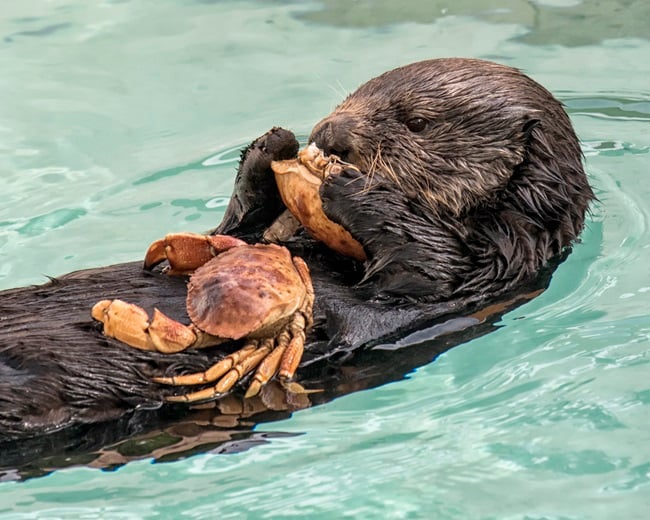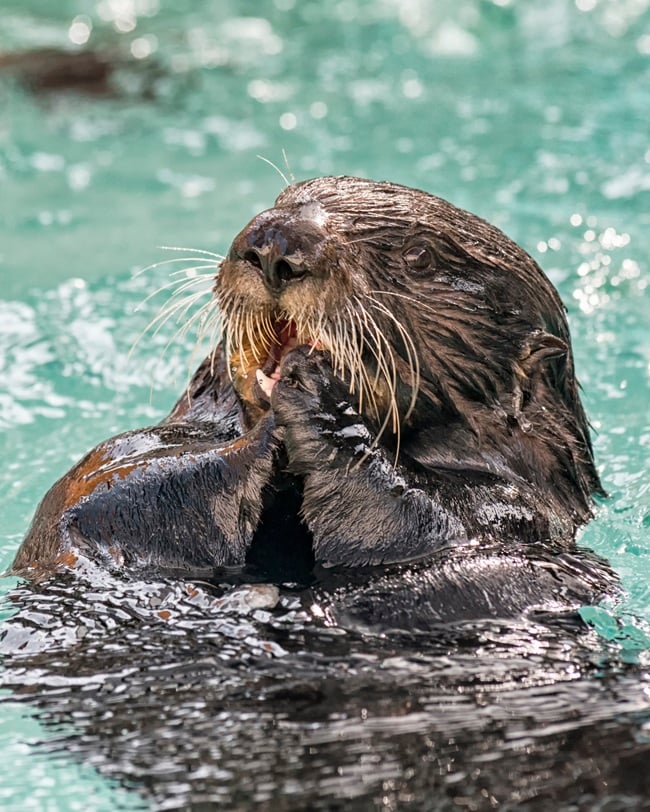Otter Diet Facts You Otter Know
Looking for some tasty otter diet facts? Here’s everything you need to know about what otters eat! Plug up your ears and nose to create a watertight seal (as otters do) and dive in!

Otters Aren’t Picky
They eat slow-moving fish and invertebrates like crabs, sea urchins, abalones, clams, mussels, and snails.
Otters Use Tools
They are excellent at encouraging crustaceans and mollusks to “come out of their shells.” They do this by utilizing tools such as rocks to crack open hard shell food items. They keep these items in pockets of loose skin under their forearms.
Otters Eat About 25% of Their Body Weight Every Day
Yes, you should be very jealous of sea otters' metabolisms, which help them stay warm in that cold water. (River otters eat a less-impressive, but still-respectable 15-20% of their body weight.)
Otters Recline to Eat
Sea otters often lie on their backs and hold their prey in their paws while eating it.
Otters Have Magnificent Pearly Whites
Their strong jaws and blunt teeth are great for crunching oysters, clams, and sea urchins!
Otters Get Lots of Help from Kelp
Sea otters love kelp forests. Kelp provides cover from predators and is also home for sea urchins which are one of an otter’s favorite prey items. Sea urchins live on the ocean floor. Sea otters dive down to retrieve and eat the urchins. Sea Otters are a keystone species because they manage the sea urchin population which in turn contributes to a healthy kelp forest.

Where to See Otters Up Close
And that’s just cracking the surface of otter diet facts! To scoop out even more morsels about these adorable carnivores, see our otters in action at SeaWorld San Diego!


